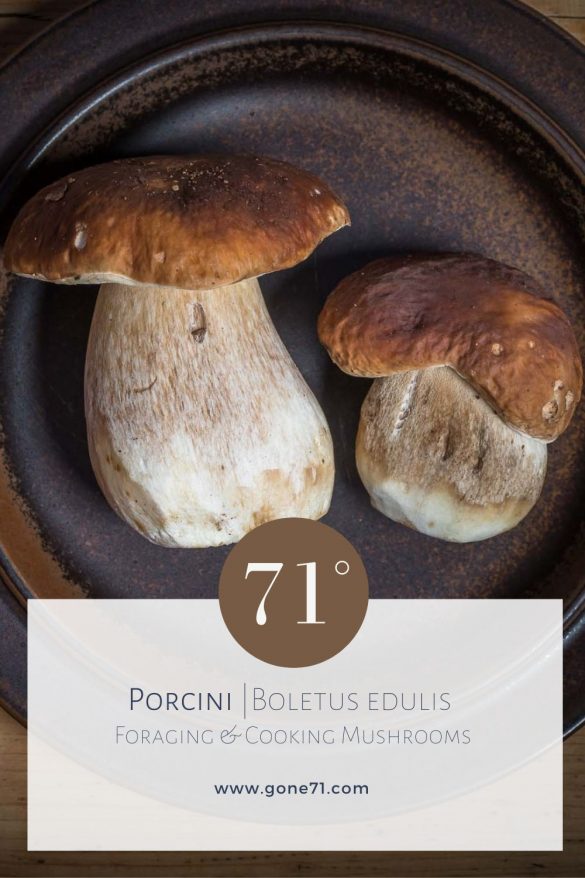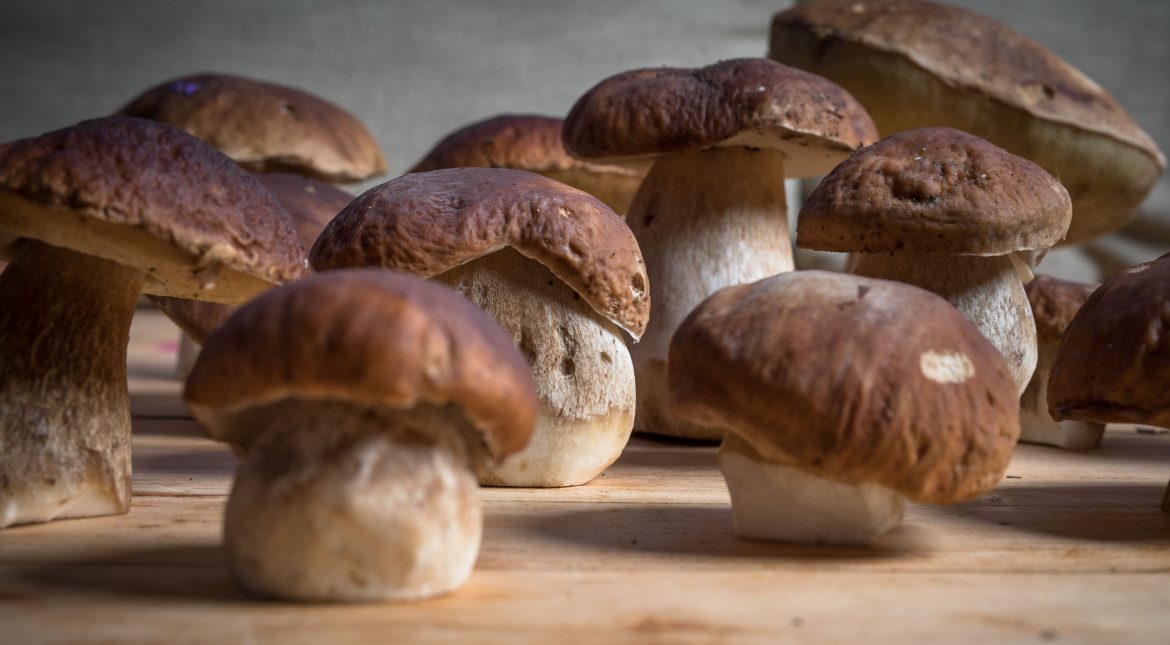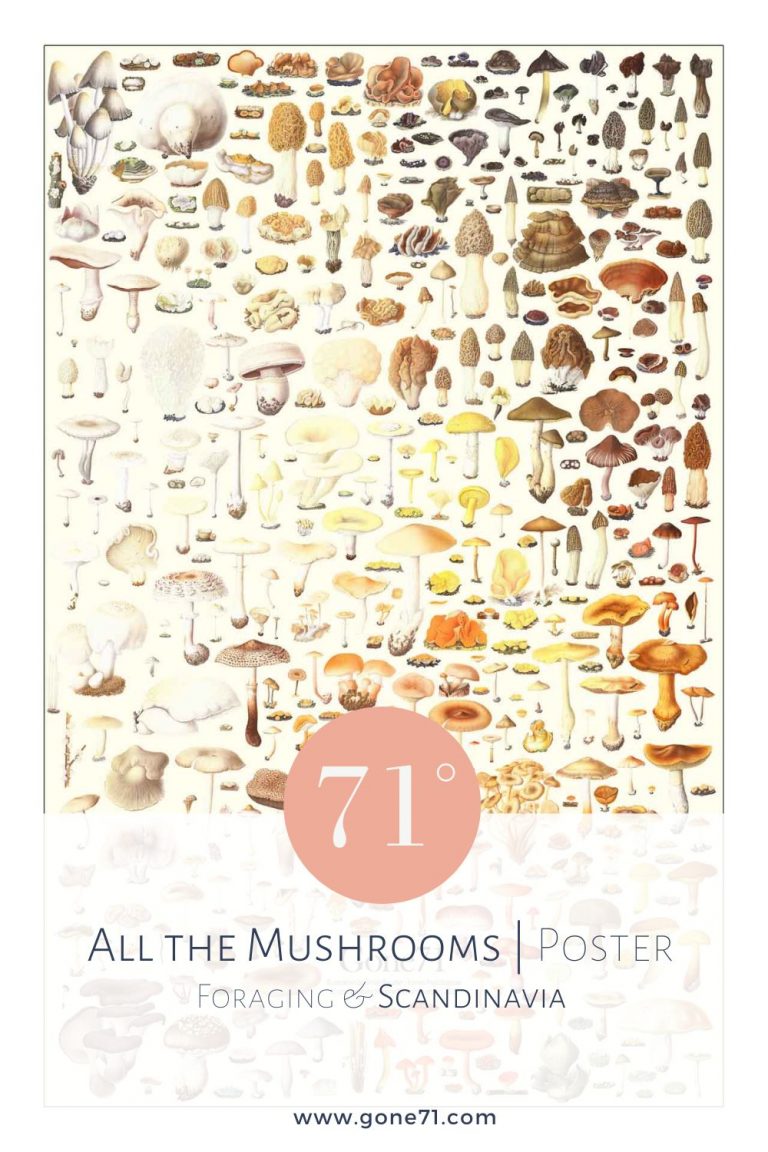syn.: Cep | swe.: Stensopp | nor.: Steinsopp | fin.: Herkkutatti | dt.: Steinpilz, Herrenpilz
Porcini mushrooms are the undisputed kings of the forest. Its massive appearance is unmistakable and its culinary properties are highly valued around the world. This noble fellow was already praised as a delicacy in ancient Rome under the name Fungus suillus and it can be assumed that its culinary use goes back much further.
In central Europe. this mushroom was reserved for the upper class for a long time and had to be handed over to the landlords in some places. The German term Herrenpilz (lord’s mushroom), can be traced back to this time as a linguistic relic. As a coveted delicacy with countless preparation options, it has definitely secured its place in the kitchen.
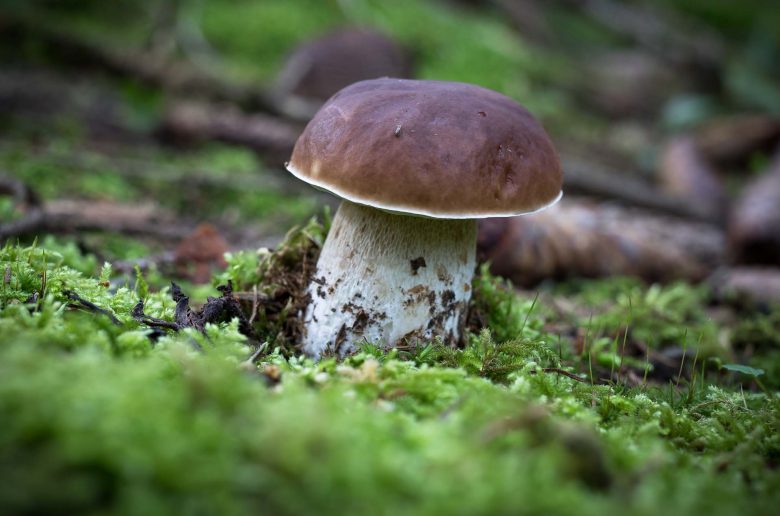
Appearance & habitat of porcini
hat: 10 – 20 cm
months: June – November
colours: light brown, brown cap | white-brown stem
characteristic: massive, bulbous trunk and (light) brown cap
habitat: pine-, spruce- and mixed forest
taste: hazelnut
smell: pleasant
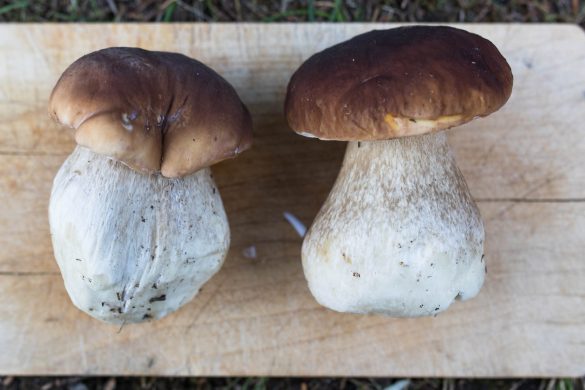
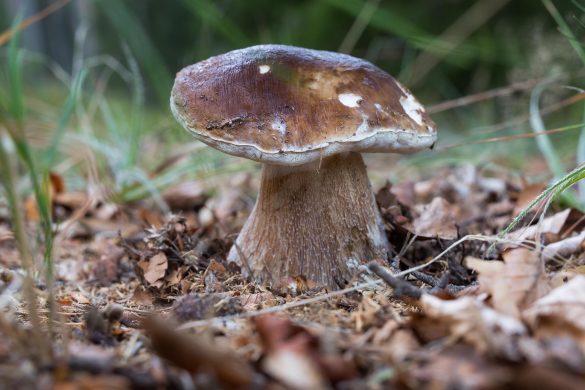
The young mushrooms have a firm, thick and in bent cap. In older specimen the hat develops a plane form and can grow up to 25 cm in diameter. The colour can have various shades of brown. In early stages they have white firm pores which change their colour to yellow and in late stages even to a greenish tone with considerably softer pores and flesh. One main characteristic is the massive bulbous, pear shaped trunk that usually features a fine light brown netlike pattern.
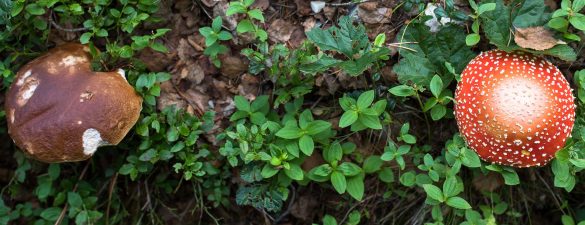
Worms & snails
Boletus are very popular mushrooms and marked prices of 50+ € per kg are common. However fellow mushroom enthusiasts are not the only ones you are up against when looking for boletus. This mushroom is also very popular amongst insects, snails and also other mammals as (rein)deer or wild boar. In many cases you will encounter specimen that are already besieged by worms or partly eaten by snails. You can simply clean these parts out and eat the unaffected ones if possible. Even though some people consider the worm-infested parts of the mushroom as additional source of proteins you should not eat them. The worm excretions are considered toxic and will do you no good.
Lookalikes of porcini
Boletus edulis can be easily confused with the Tylopilus felleus better known as bitter bolete or bitter tylopilus. This mushroom looks very similar with usually a slightly thinner and darker stem and lighter cap. The pores develop a slightly pinkish tone especially in older specimens. If you are not sure the easiest way to identify this mushroom is its strong bitter taste. Bitter bolets are not poisonous but even a small amount is enough to ruin your whole dish. Make sure to leave them in the forest.
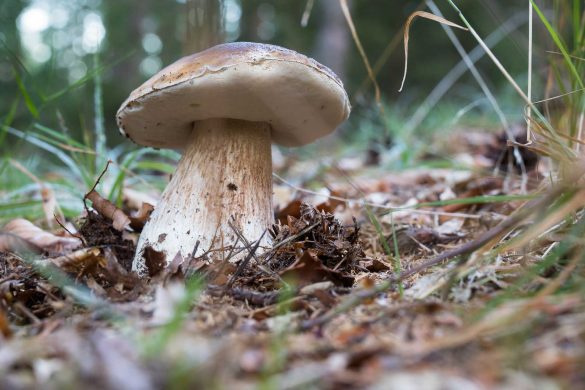
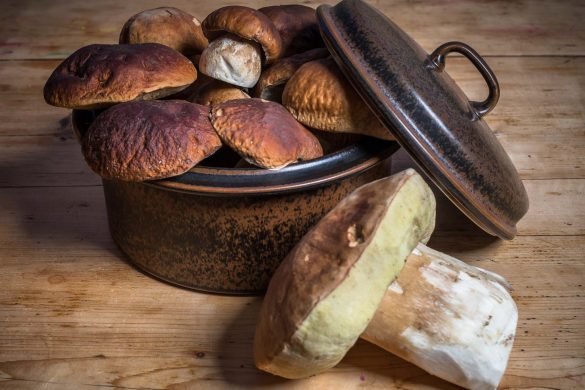
Different types of porcini
Very few people know that there are different types of porcini mushrooms. First of all, it should be said that they are equal in their delicacy. The one that we find most frequently are the classic Boletus edulis also known as spruce cep or spruce porcini. The summer bolete or summer cep (Boletus reticulatis) is often found in mixed forests, especially in symbiosis with oaks, beeches and other deciduous trees. Pine bolete or pine wood king bolete (Boletus pinophilus) are characterized by a mostly dark, red-brown cap and grow mainly on pine trees, occasionally on fir and spruce.
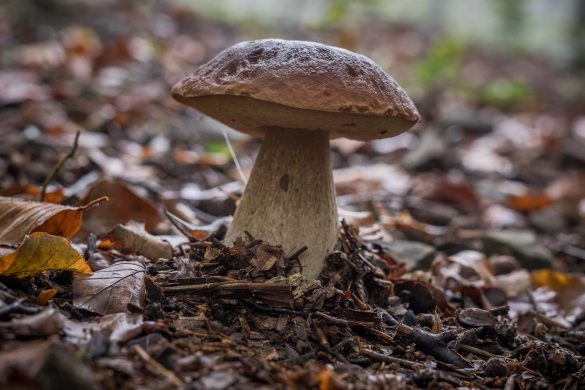
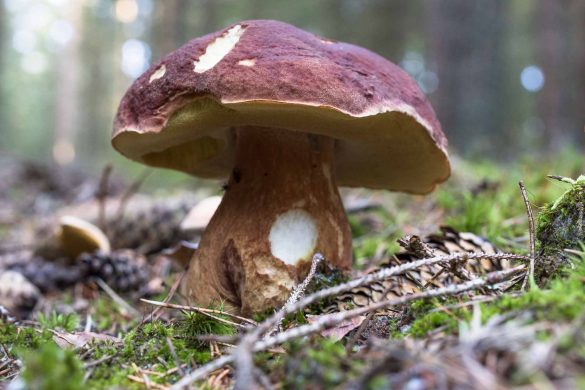
A mushroom for beginners
The pores, its brownish cap, and its pure white flesh makes it almost unmistakable and a mushroom that can also be foraged by inexperienced mushroom pickers.
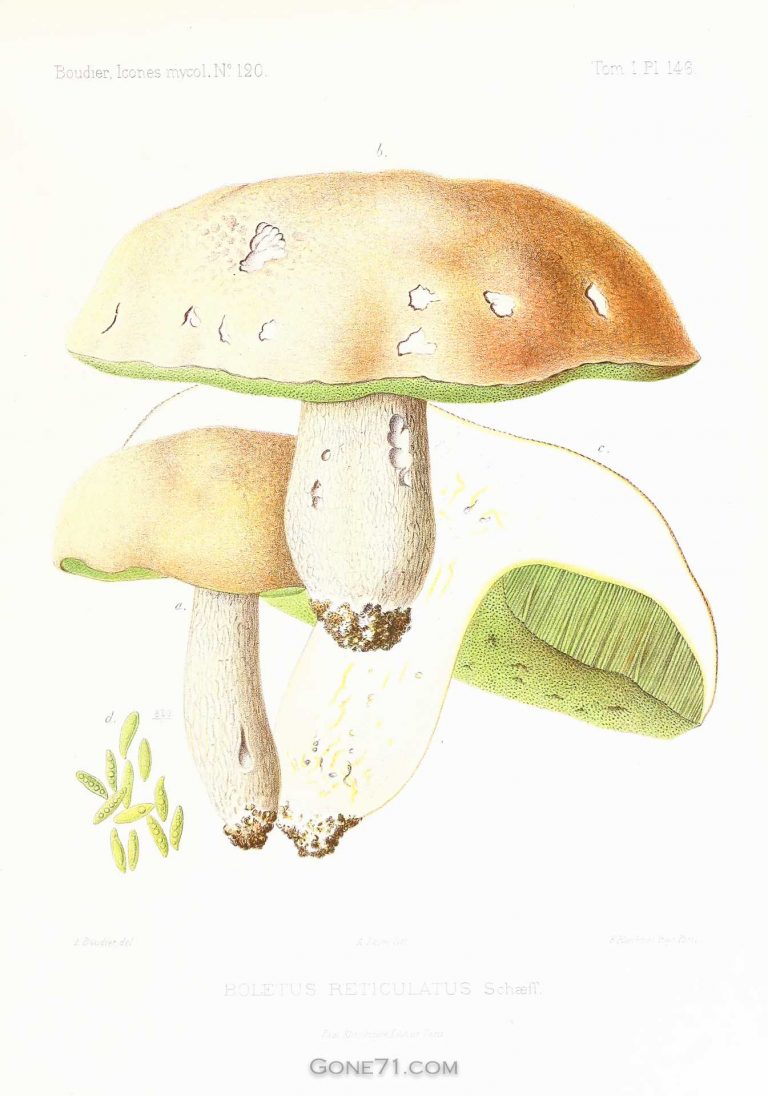
Porcini in the kitchen
In the case of porcini mushrooms, the entire fruiting body, including the stem, is tasty. The bulbous young porcini mushrooms are characterized by a particularly firm flesh and firm white pores, which are also excellent for processing. In older specimens, the pores first turn yellowish and finally greenish. The consistency of the pores becomes very spongy and we usually carefully separate the pore layer from the cap meat at this stage and discard it.
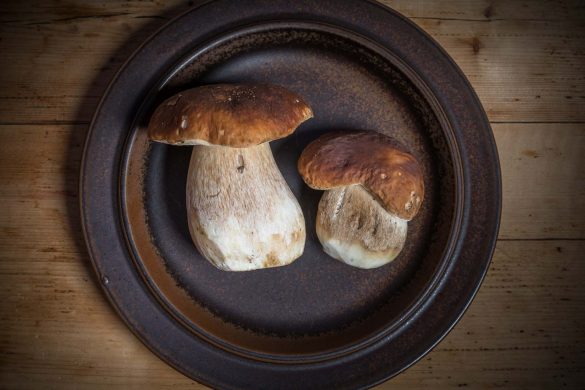
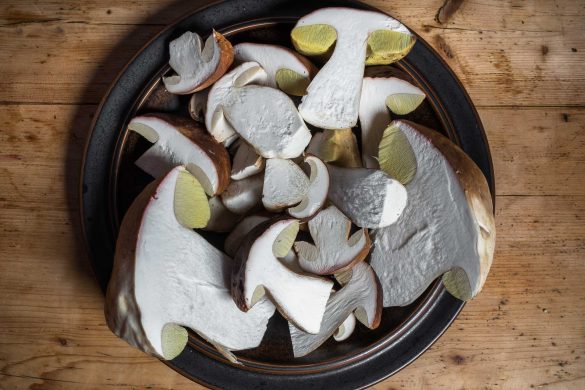
In principle, the following applies to us with porcini mushrooms: less is more here. If you are lucky enough to be able to access a large number of these delicacies, you can preserve them by drying or pickling them.
Cleaning porcini
We do not use water when cleaning. It is best to carefully remove the remains of dirt from the stem and cap with a knife in order to preserve as much of the mushroom substance as possible. Their pleasant, aromatic taste and firm bite make them suitable for a variety of preparation options. It is also one of the few mushrooms that can be eaten raw.
Porcini in olive oil
One of the best ways to prepare cep is to slice them in (4 mm thick) slices, spice them with salt and pepper and fry them in olive oil or put them on the grill. They are also exquisite in soups and sauces.
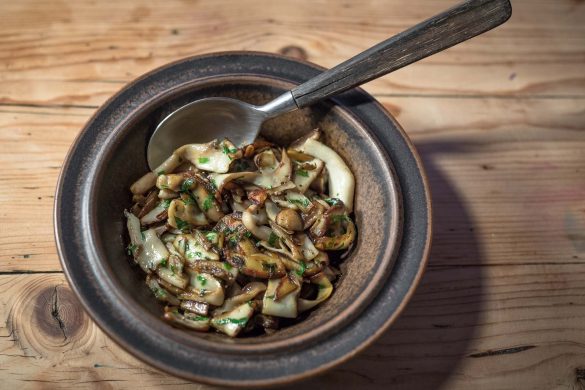
Porcini soup
Porcini soup is one of our absolute favorite dishes. It’s a really great way to express the flavor potential of this mushroom. It is easy to prepare and is also suitable for less experienced cooks.
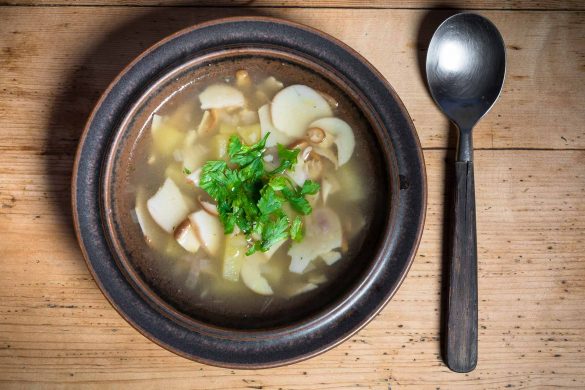
Dried porcini
Even though they are best served fresh they are very suitable for drying to use them at a later stage for soups and other dishes.
To dry, we cut the mushrooms into thin slices and let them dry in a warm, well-ventilated place. You have to be careful that the mushrooms don’t start to mold. Anyone who has a dehydrator has a clear advantage here. If you want, you can also dry the mushrooms in the oven at 40°C. The mushrooms are done when they make a rustling sound when rubbed together. The dried porcini can be stored in jars for many months.
You can use them in soups, risotto and sauces like the fresh mushrooms.
Porcini risotto
Porcini Mushroom Risotto is another great way to prepare this mushroom and another classic.
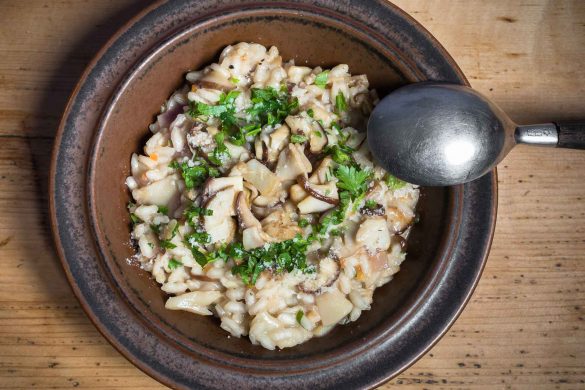
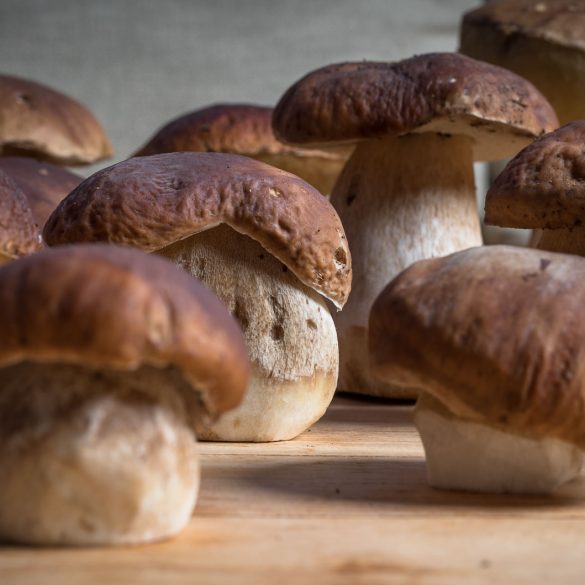
Porcini risotto
Ingredients
- 500 g porcini mushrooms
- 1 onion
- 3 cloves of garlic
- olive oil
- 400 g risotto rice
- 200ml white wine
- 750 ml vegetable stock
- salt, pepper
- 150g Parmesan
- 1 tbsp (fresh) parsley
Instructions
- Clean the mushrooms and cut into fine slices.
- Chop the onion finely and sauté in olive oil for about 4 minutes.
- Finely chop the garlic and add to the onions after about 3 minutes and fry briefly.
- Stir in the risotto rice, salt and a little pepper and sauté briefly.
- Pour in the white wine and bring to the boil, stirring constantly.
- Gradually pour in the soup and stir in so that the rice is always just covered.
- The mushrooms are sautéed in olive oil for 5 to 10 minutes until golden brown and are stirred into the risotto together with the freshly chopped parsley 5 minutes before the end.
- Shortly before the end you can then decide whether you would prefer the risotto to be more liquid or firm.
- The final step is to stir in most of the parmesan.
- To serve you can hold back a little parmesan and sprinkle over the finished dish.
Notes
If you don't have fresh porcini, you can also cook with dried mushrooms (about 80g for this dish). However, these are pre-soaked in water for about 60 minutes and then cooked from the start.
Historic Recipes from the legendary McIlvaine mushroom guide (1901)
As a bonus, here are some very old recipes from the legendary book: Charles McIlvaine: Toadstools, Mushrooms, Fungi – Edible and Poisonous. One Thousand American Fungi.
This is a glimpse into the past on how our forefathers (and mothers) prepared porcini.
“Remove the stems, and the tubes unless they are compact and young, or the dish will be slimy from the tubes. Wipe the caps clean.
To BROIL.
– Put on wire broiler or in a hot buttered pan. Cook well. Add butter, pepper and salt.
To STEW.
– After cutting the caps in pieces of similar size, stew in a covered saucepan for twenty minutes. Do not use much water. When done, add butter, or cream, pepper and salt. Some persons may prefer to add a little lemon juice or sherry.
To BAKE.
– Bake for half an hour in covered dish, add oil or butter, a little parsley, and garlic if liked, pepper and salt.
To FRY.
– Remove the tubes from all the caps, excepting of very young or very short-tubed species. Slice the caps as you would egg- plant. Fry in butter, oil or fat, or dip in batter or in egg crumbs.” (McIlvaine 1901, p. 640)
B. EDULIS SOUP
(as made in Hungary). Having dried some Boleti in an oven, soak them in tepid water, thickening with toast bread, till the whole be of the consistency of a puree, then rub them through a sieve, throw in some stewed Boleti, boil together, and serve with the usual condiments. (McIlvaine 1901, p. 640)
To DRY BOLETI
(English method). Gather in dry weather. Remove stems and tubes. Wipe clean with a damp cloth. Slice. String the slices. Hang up in a warm place for two days. Then give them a minute in a moderately warm oven. Pack in tins with spice. When wanted steep the slices in tepid water for some hours, till they swell. Then proceed to dress as for fresh Bolets. The Russians retain the stems and dry their Bolets whole, stringing them up the stem and through the center of the cap.” (McIlvaine, 1901, p. 641)
We have compiled this overview with the best of knowledge and belief, but do not claim to be complete and reserve the right to make errors.
Learn more about poisonous mushrooms and mushroom poisons here
↓↓↓
Find some inspiration in other mushroom recipes
↓↓↓
